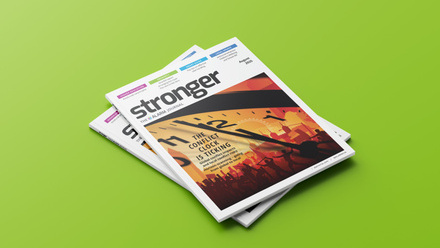The UK insurance market currently faces many challenges when arranging and providing alternative accommodation for tenants and homeowners, particularly when involving property damage or natural disasters.
Given the increasingly complex landscape, flexibility and early engagement are critical to successfully manage alternative accommodation claims.
By thinking outside the box with solutions like home pods and static caravans, and by adapting to the unique needs of each customer, insurers can maintain a high level of service while managing costs. This also benefits your customers when traditional alternative accommodation is not an option due to their needs.
Five challenges affecting the alternative accommodation market:
- Increase in tourism and events returning to pre-pandemic levels.
- Increased government demand: Under the Immigration and Asylum Act 1999, the home secretary is required to provide accommodation to all destitute asylum seekers.
- Landlord withdrawal: There is a trend for landlords giving up buy-to-let properties due to a variety of factors including; Renter’s Rights Bill, Awaab's Law, and the Future Homes Standard (2025) as well as diminishing returns given tax changes and inflation.
- Hotel cost increases: Hotel prices have risen, as hotel chains attempt to regain lost profits after the pandemic.
- Council spending on hotels: Council spending on hotels has tripled in the past five years, as housing authorities are forced to use options like Travelodge or Premier Inn to house homeless households.
Impact on the insured
While the insurer may be responsible for funding and arranging alternative accommodation, difficulties in sourcing suitable options can create significant issues for the insured party. Ultimately, the housing provider retains responsibility for ensuring customers are adequately housed, and customers typically do not distinguish between insurer and landlord; they simply want a safe and comfortable place to live.
This situation places considerable pressure on the housing provider to communicate clearly and consistently with customers about both short-term and long-term plans, including decanting, repair timelines, and eventual return. However, ongoing volatility and uncertainty in the alternative accommodation market can make it difficult to provide accurate and timely updates, increasing the risk of customer dissatisfaction.
Ultimately, a collaborative, transparent approach is essential to managing expectations and maintaining trust during what is often a highly stressful time for all parties involved.
What insurers consider and what they can provide
With the average cost of a settled claim up 23% from 2021-2022 and 33% higher so far this year, there will be more focus on alternative accommodation to reduce growing costs.
To fully understand your needs, insurers need to consider the following points to find the best solution for all involved:
- Is the property fully uninhabitable? If not, insurers will support your customers to remain in their home until repairs begin. Options like a disturbance allowance can be an area to consider and there should be early discussions with your insurer. In some instances, because of either medical needs or locality to local schools, people prefer to stay in their homes.
- Special requirements: It's crucial to factor in a people's vulnerabilities, whether they have children, pets, or specific mobility needs. Are they flexible in terms of location or property size? These are important considerations in finding the best solution.
- Early engagement: Engage with your customers early on to assess their needs and engage with your insurer early on to communicate these to ensure timely, tailored solutions.
Insurers are beginning to look at different solutions to alternative accommodation. At Protector our approach includes:
- Home pods: Kitchen or bathroom pods are modular, offsite-built units that include all fixtures and fittings for a kitchen or bathroom. These can be used to allow customers to stay in their property while certain areas are repaired. The pods can be installed either inside or outside the property, depending on available space. They allow the person to remain on site rather than seek alternative accommodation.
- Static caravans: For larger properties, especially those with ample grounds, hiring or purchasing a static caravan may be a viable option. The caravan can be placed within the property’s boundary, allowing the customer to remain close to home. Insurers will need to consider the logistics of delivery and siting, as well as any associated costs.
Strengthening communication and coordination between insurers and the insured can help alleviate some of the pressures, ensuring a more seamless and responsive approach to rehousing and recovery.


